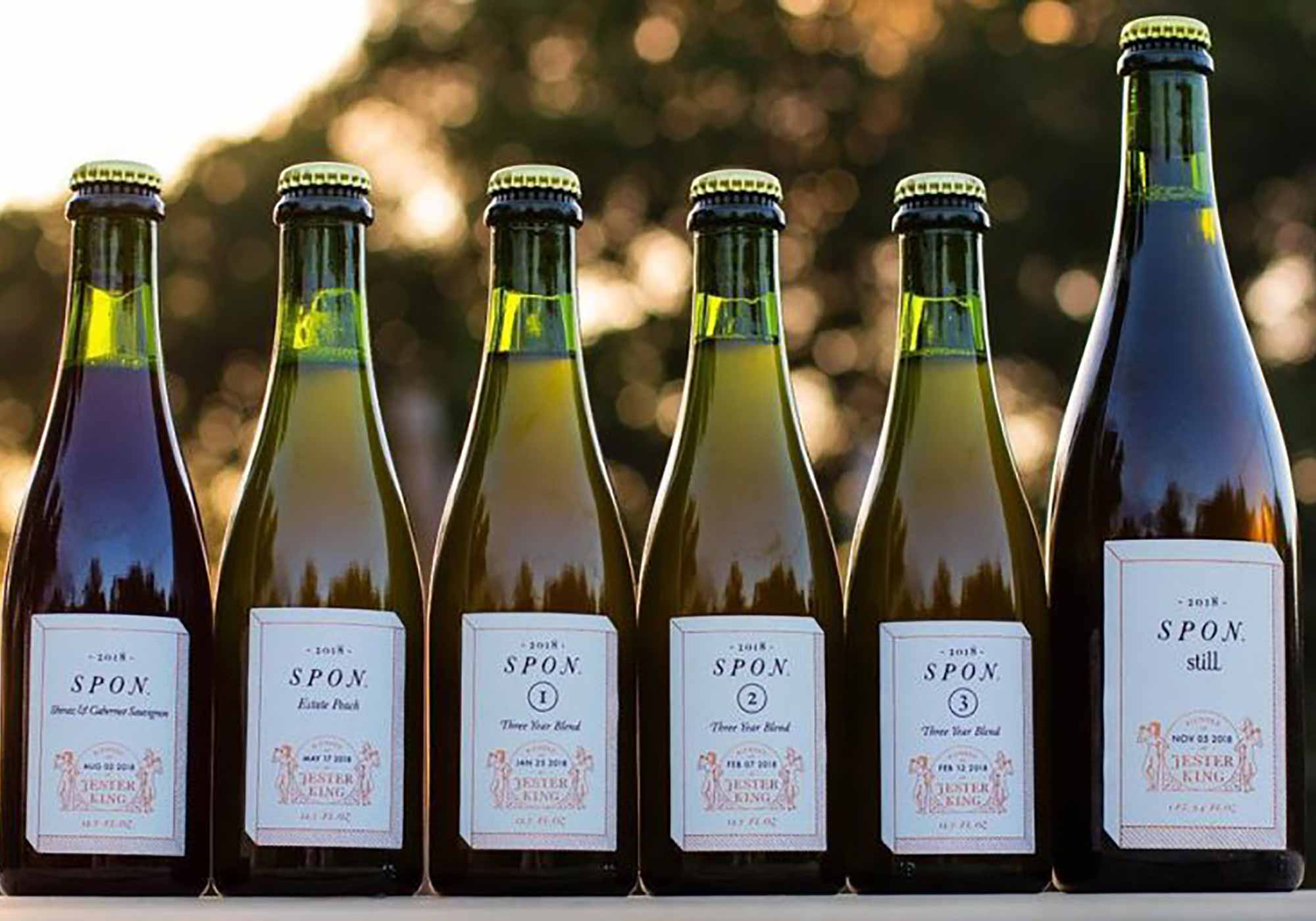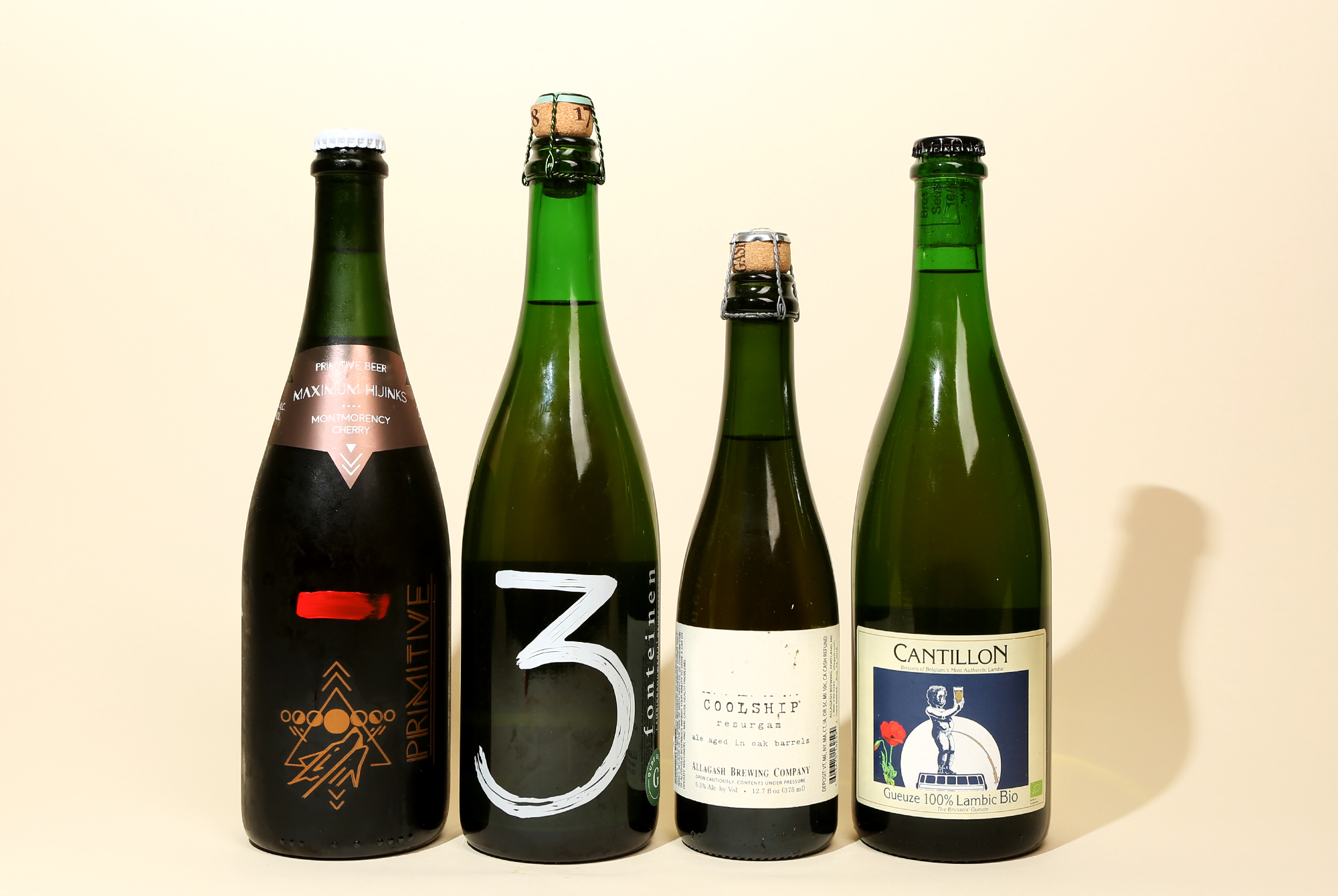Shop
Hop Culture’s Guide to Spontaneous Fermentation
Spontaneous fermentation is one of the most romantic processes in the beer brewing world. But also, arguably one of the most confusing.
Historically, some believe that all beer came from spontaneous fermentation. On the other hand, some claim that’s a misconception. We aren’t here to settle the dispute, but rather to demystify the process.
And above all, encourage you to try a few!
What Exactly Is Spontaneous Fermentation?
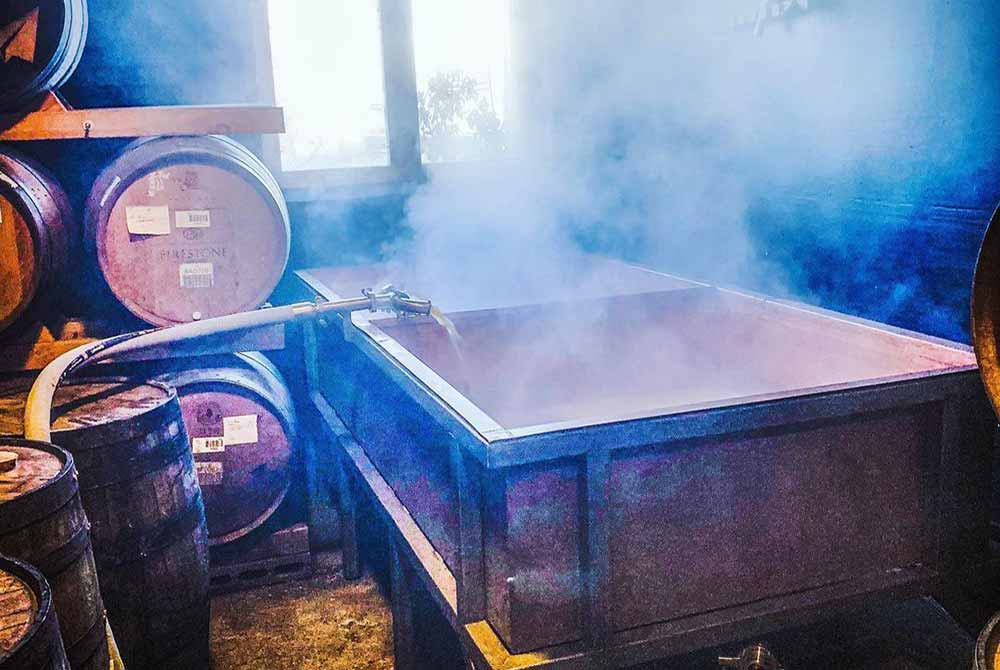
Photography courtesy of Black Project Spontaneous & Wild Ales
Basically, spontaneously fermented beers rely on natural microflora from the air to ferment. Instead of cultivated yeast.
Whereas traditionally fermented beers have predictable traits from specific yeast strains, spontaneously fermented beers take on the characteristics of their surroundings.
This makes them wildly unpredictable. In other words letting go of that traditional control creates “wild ales”.
“It’s an old school way of brewing,” says Jesse Valencia, Marketing Director at Against the Grain Brewery. “In folklore, it’s said that Belgian farmhands would choose where to work based on the beer that was brewed. The flavor profiles were largely dependent on the microbiology of the land around them.”
Spontaneous fermentation relies on geography and local microflora. Much like how wine features terroir, the idea that the environment gives beverages a sense of place.
Sounds complicated? Well, spontaneous fermentation is an animal (or should we say bacteria) all its own. And taming, or actually, letting this process run wild is a science and natural art unto itself.
“Despite the beauty of this process and near religious adherence to certain techniques, the microbes are not a function of divine intervention but are ubiquitous in the natural world,” says Brandon and Lisa Boldt, Co-Founders of Primitive Beer, who only make beers through spontaneous fermentation.
Therefore, stick with us as we break down this beast of yeasts.
Still Confused? Here’s the Exact Definition of Spontaneous Fermentation
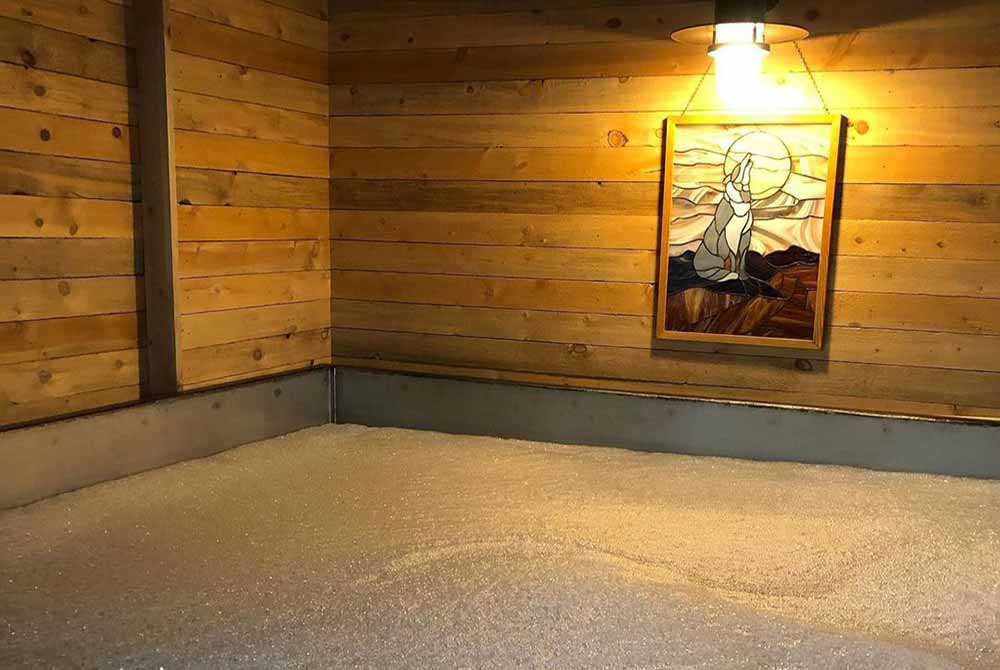
Photography courtesy of Primitive Beer
Let’s get a bit technical.
According to the Boldts, “Spontaneous fermentation is the chemical breakdown of sugar into other compounds without the purposeful addition (pitch) of yeast or bacteria.”
All spontaneous fermentation requires a koelschip or large open fermentation vessel. Spontaneous fermentation occurs when brewers pour the wort (or unfermented beer) into a koelschip. Left on its own, the beer picks up natural fauna in the air. These naturally occurring yeasts ferment the beer.
On the other hand, a traditionally fermented beer uses cultivated yeast strains added by hand.
“Think of spontaneous fermentation like the process of capturing new yeast and bacteria for making sourdough bread each time. As opposed to wild fermentation akin to splitting and growing your house sourdough culture through time for bread dough. Neither process is better nor worse, but each technique yields different results, incorporates different processes, and should have justifiably different classifications,” says Brandon.
Many who brew this way, like James Howat, Founder and Blender at Black Project Spontaneous & Wild Ales, strictly adhere to definitions and classifications. “To me, if you are adding koelschip wort to a barrel that still has yeast in it from wine or previous beer (it is impossible to fully sterilize something like a barrel, but I’m talking here about if your intent is to leave some yeast in to use for the fermentation) then that is not spontaneous,” says Howat.
For Howat to truly be spontaneous, all other potential fermenting elements must be eliminated.
Step-by-Step Here’s How Brewers Use Spontaneous Fermentation
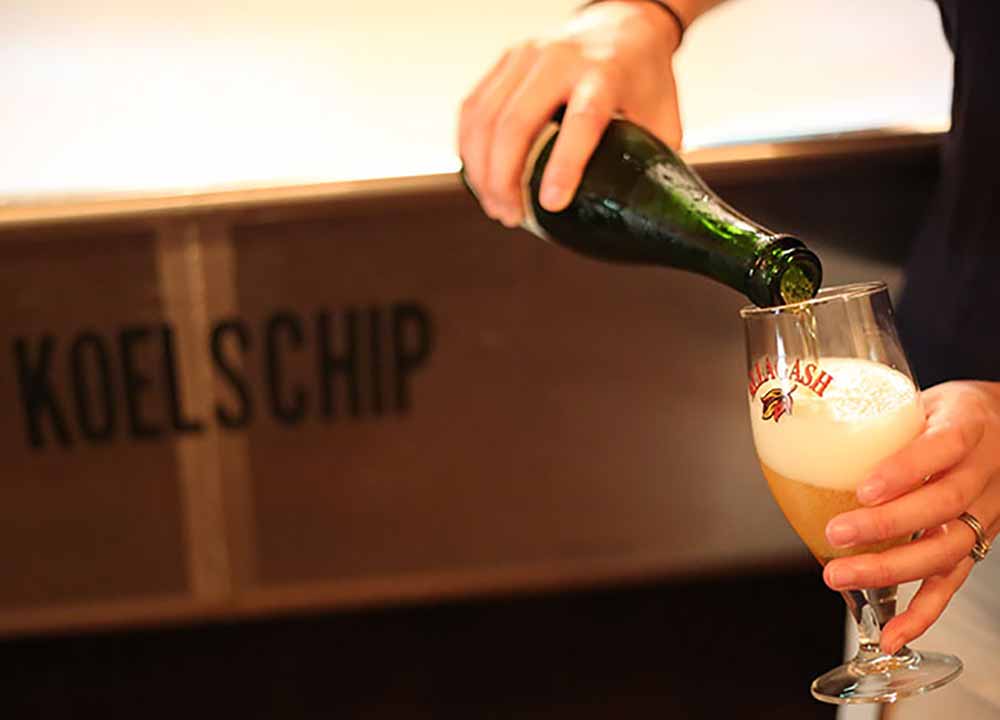
Photography courtesy of Allagash Brewing
For the most part if a brewer plans to spontaneously ferment a beer they still start out with the traditional steps.
First, they create a mash by adding hot water to grains, barley, malt or other bases. The grains breakdown, steep, and add sugar to the water. This water from the mash process becomes the unfermented beer (wort). While the next step can vary in general brewers add aged hops during a boil to lower the potential bitterness and assist in bacteria growth. Lastly and most importantly, in spontaneous fermentation brewers transfer the wort to a koelschip to inoculate.
Here comes the key step.
For roughly one to ten days airborne or wild yeast known as Brettanomyces (also known as Brett) and local microflora attack the wort. (Important note: Brett can be naturally present in a foeder or barrel. But only airborne Brett creates spontaneous fermentation.)
After that, one transfers the liquid into a barrel to fully ferment before blending. This can take anywhere from six to eight months or even up to three years.
You Mentioned a French Word Terroir…
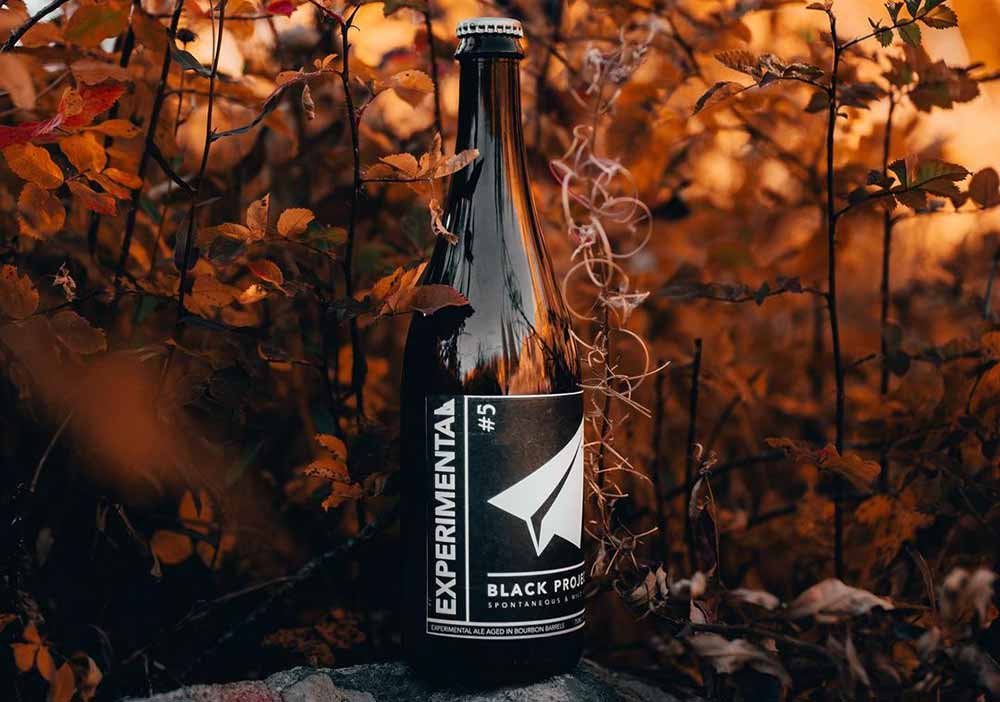
Photography courtesy of Black Project Spontaneous & Wild Ales
Because spontaneously fermented beers pick up naturally occurring flora and fauna their flavor also feature characteristics from their respective environments.
Often referred to as terroir. A French term that means “sense of place”, terroir adds unique character to a beer or wine.
However, this also means that not every locale works for spontaneous fermentation.
“When I was with Goose Island giving tours, we’d have people come through asking why we didn’t have a koelschip,” says Valencia, “It just wasn’t possible—there’s a trainyard directly behind the brewery and pollutants would find their way into the beer.”
Trainyard beer might not be so appealing to the consumer. But there are a range of beer styles conducive to spontaneous fermentation.
What Types of Beers Use Spontaneous Fermentation?
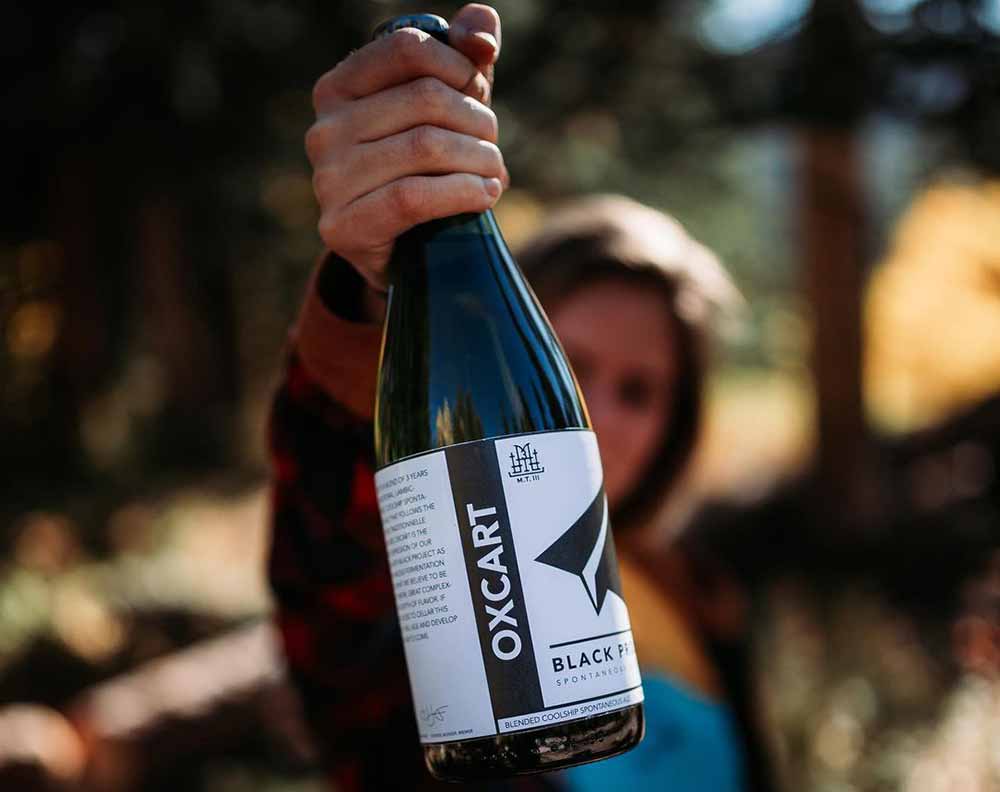
Photography courtesy of Black Project Spontaneous & Wild Ales
Many assume that spontaneous fermentation automatically means sour beer. However, a brewer can make a sour beer without utilizing this process (see: kettle souring).
In fact, lambic is the most familiar style that incorporates spontaneous fermentation. This beer style could cover an entire article just by itself. Luckily, we created a beginners guide for you.
“Lambic and its subtypes (gueuze, kriek, etc.) are the only traditional styles that I am aware of which have subsisted commercially into modern times using spontaneous fermentation,” says Howat.
If you’re veering out a bit from the gold-star realm of spontaneous fermentation, modern brewers can also use this process in styles like Belgian farmhouse ales and saisons, oud bruins, flanders and biere de gardes.
“Outside of Lambicland, the use of identical techniques and standards are implemented by other breweries and may be classified as Méthode Traditionnelle (MT) or an assortment of other style designations depending on the whims of the producer,” says Brandon.
What Are the Characteristics of a Spontaneously Fermented Beer?
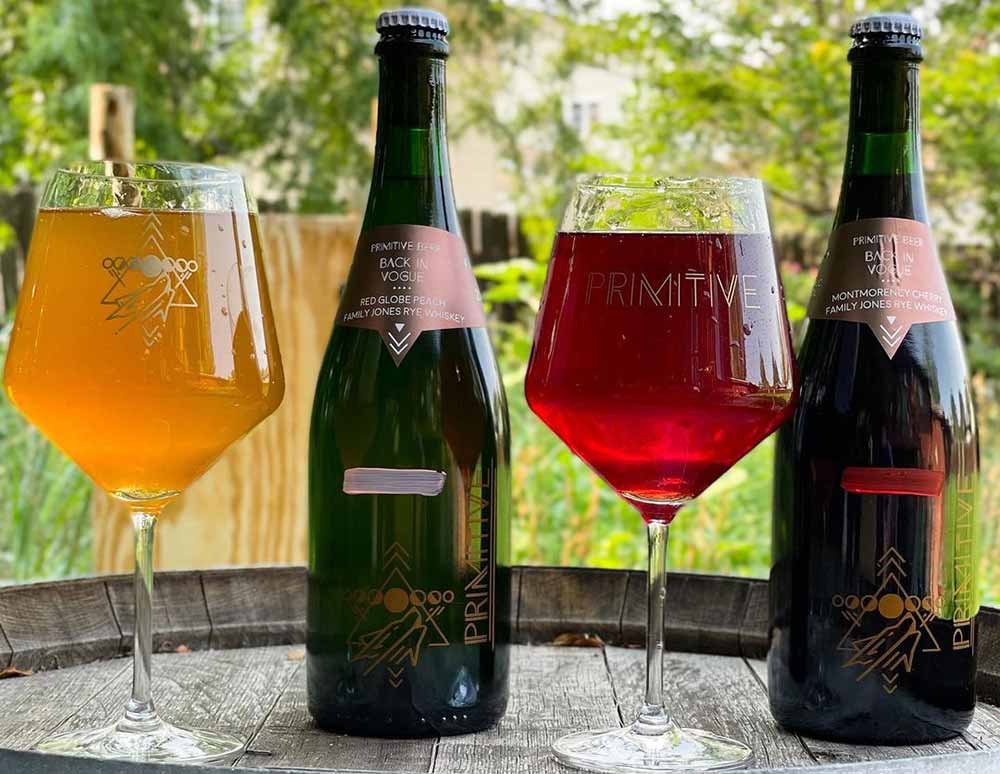
Photography courtesy of Primitive Beer
Alright, let’s cut to it.
Though not all spontaneously fermented beers are sour, these ales still feature funky notes. Often depending on the pH and acidity, these beers will give you a bit of a pucker.
Unlike lagers or IPAs, which for the most part can be described rather succinctly, spontaneously fermented profiles fall on a broad spectrum.
“No two spontaneous fermentations will be exactly the same, even from a single brewer, but the use of blending helps develop more consistency between releases and a more defined terroir for each producer,” says Lisa.
Similarly, flavor will vary based on recipe development. “It can also depend on the techniques used in brewing and, to a smaller extent, the location of the koelschip geographically or what the local microflora is like,” says Howat.
But generally you’ll get:
Appearance
The visual characteristics of spontaneously fermented beers vary. Appearance can depend on what fruits or malts brewers incorporate.
With that in mind, “the color and tint may go from straw colored to dark reds and browns, clear to hazy,” says Valencia.
Flavor and Aroma
“The taste almost always has a level of funkiness, but you may also pick up the essence of fruit if it’s used in the beer, there’s spices, some tart characteristics, slight souring isn’t uncommon if a beer contains a lactic acid producing bacteria such as Lactobacillus and Pediococcus,” says Valencia.
Similarly, Brandon says, “Age and type of maturation container may also produce flavor complexities like notes of caramel and musty basement from oxidation, or vanilla, coconut, spice, and minerality from wood and clay vessels.”
One big common trait? Hay, which can be reminiscent of the style’s origins.
What Are Some Spontaneously Fermented Beers I Can Try
A Toast to Legends
Primitive Beer – Longmont, CO
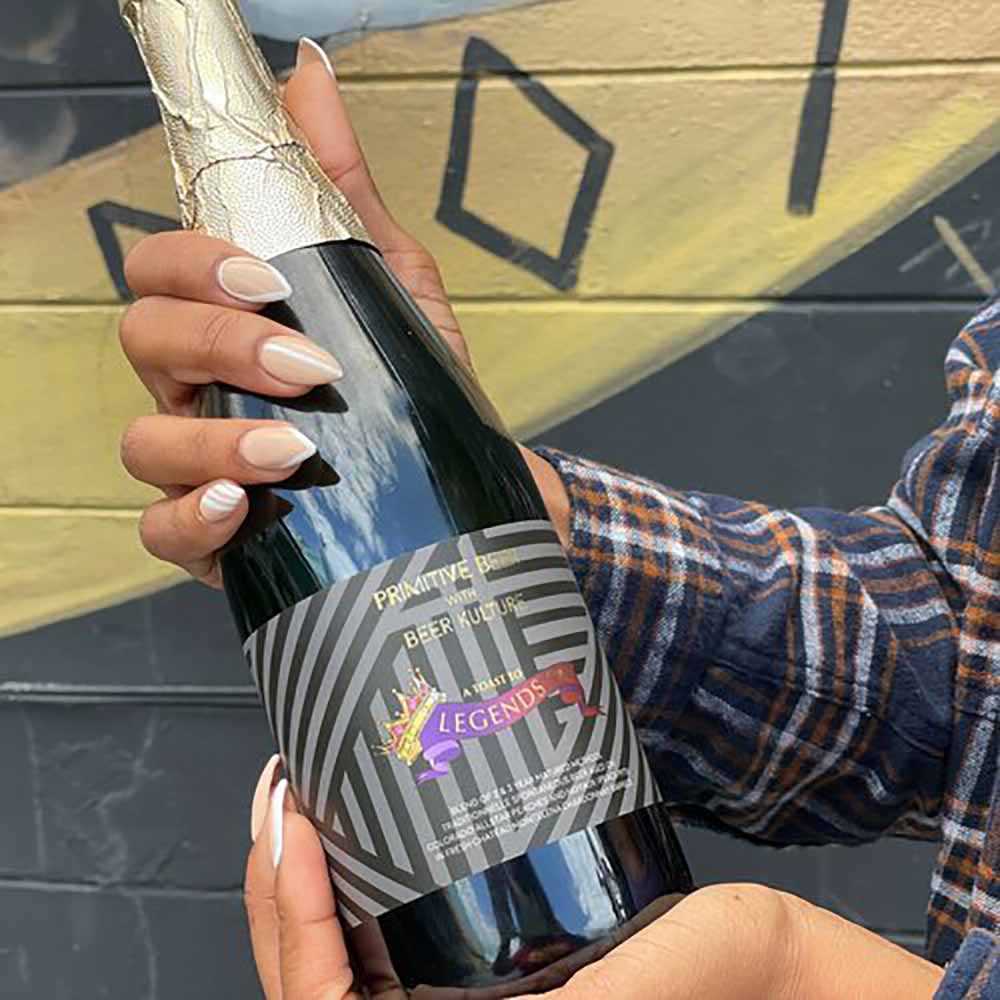
Photography courtesy of Primitive Beer
A Toast to Legends blends two- and three-year matured Méthode Traditionnelle spontaneous beer. Rested on Colorado Allstar Peaches and Noyaux (peach pits) in fresh Château Montelena Chardonnay barrels, A Toast to Legends incorporates Colorado Wildflower Honey as the priming sugar for bottle refermentation. Primitive uses one-hundred percent Colorado-grown ingredients for a beer taht boasts freshly baked almond croissants and a blooming summertime peach tree on the nose balanced by just the right amount of house funk.
Oxcart
Black Project Spontaneous & Wild Ales – Denver, CO
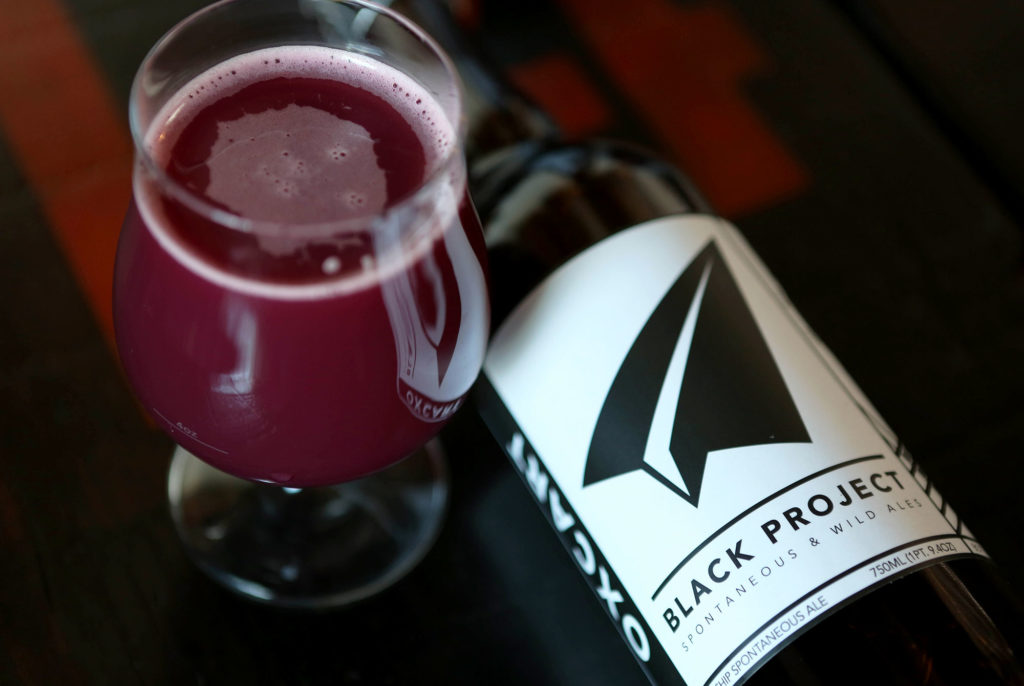
Brewed as a three year spont-ferm in the style of Belgian gueuze lambic, Oxcart counts itself as one of the first of its kind. The blend consists of one, two, and three year old Méthode Traditionnelle Spontaneous Ale with notes of peach, apricot, fresh hay, wild flower fields, and tart berry.
Gueuze 100% Lambic Bio
Brasserie Cantillon – Anderlecht, Brussels, Belgium
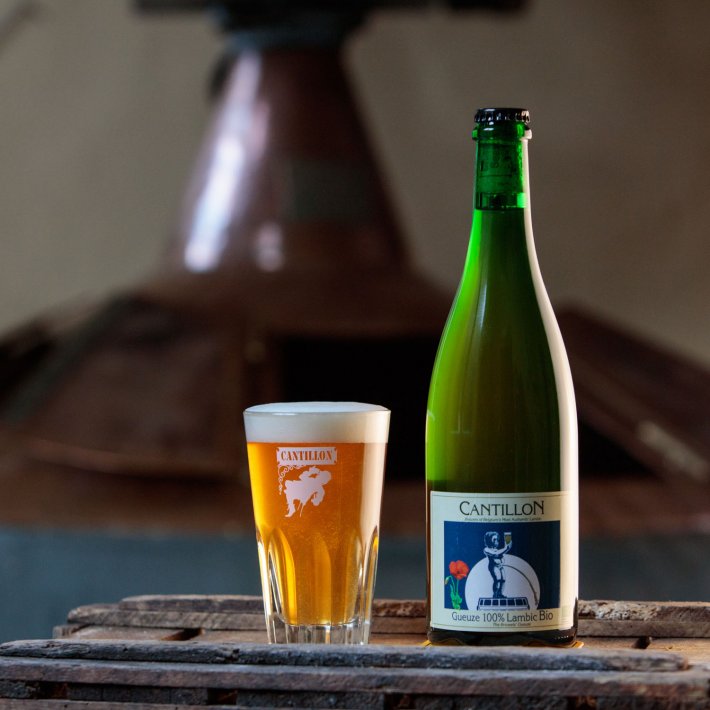
Photography courtesy of Brasserie Cantillon
A blend of one, two and three-year lambics, Cantillon Gueuze features slight citrus fruit on the nose with flavor notes of apple and lemon. Plus, just a bit of delicate sourness.
Vintage of Perzik (2020)
Funk Factory Geuzeria – Madison, WI
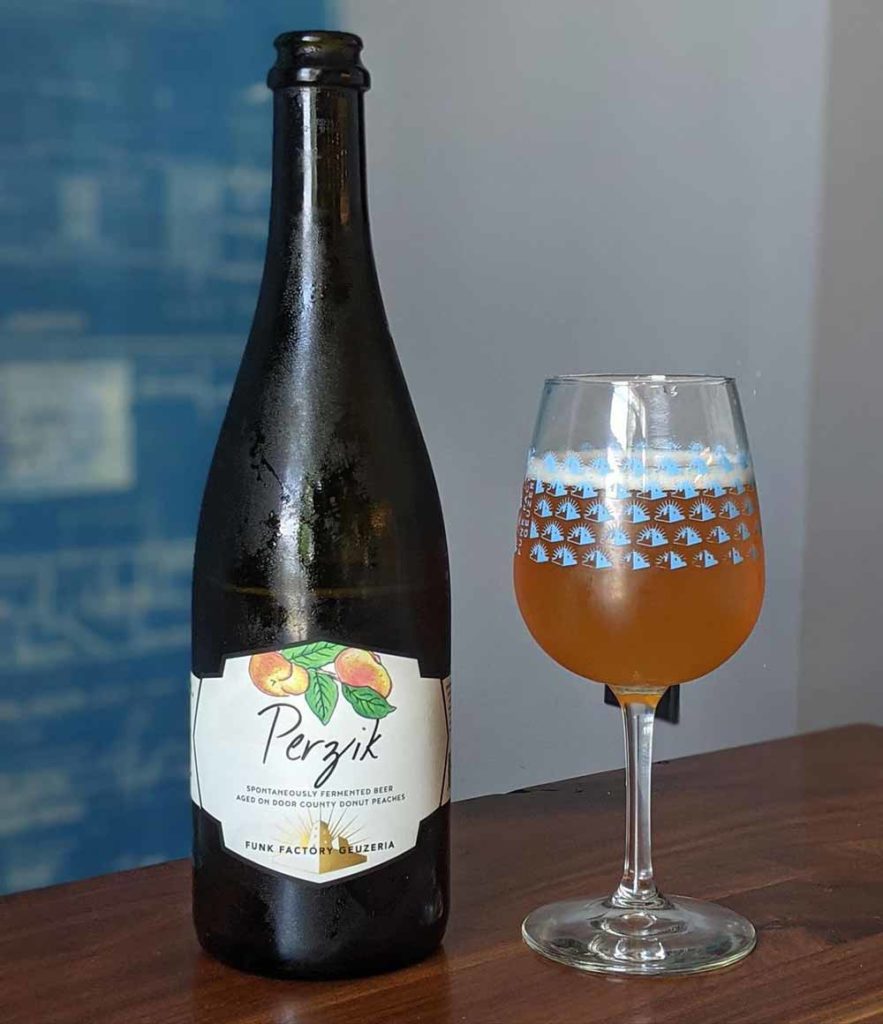
Photography courtesy of Funk Factory Geuzeria
Spontaneously fermented adhering to the Méthode Traditionnelle standard, this beer aged for eighteen to thirty months in used French oak barrels. Funk Factory Geuzeria then re-ferments the beer over three pounds per gallon of yellow and white donut peaches exclusively from Door County, WI.

